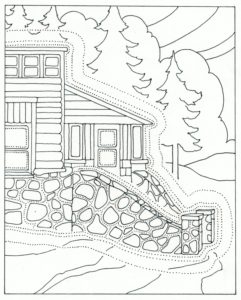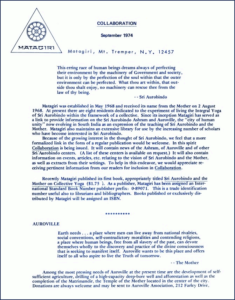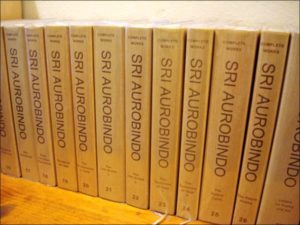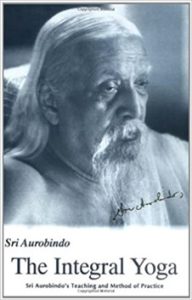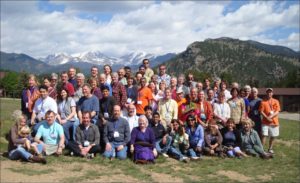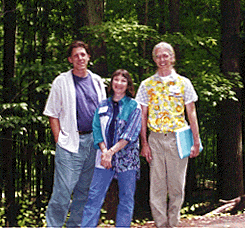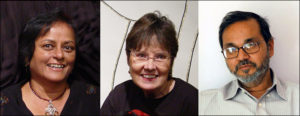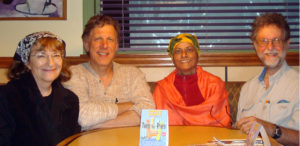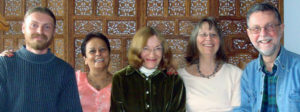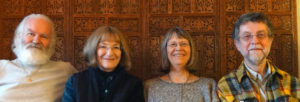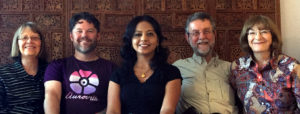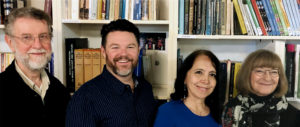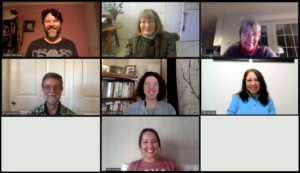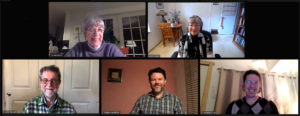History of the Sri Aurobindo Association
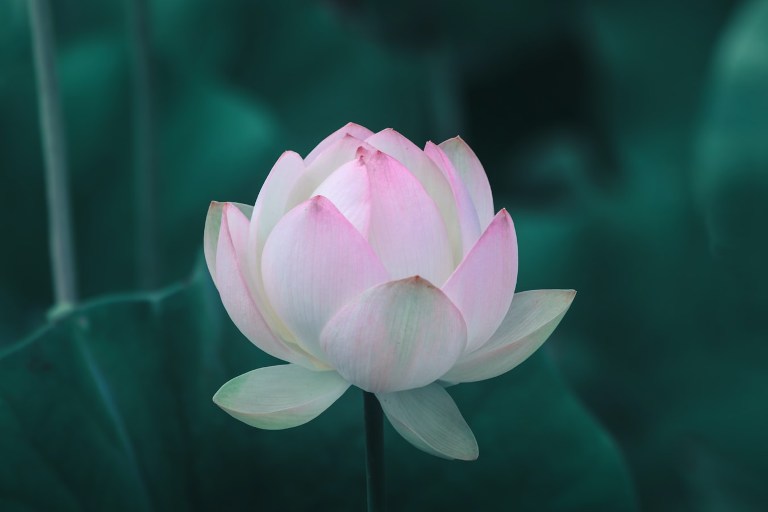
by Lynda Lester
The Sri Aurobindo Association of America (SAA) is a California nonprofit organization whose aspiration is to help manifest the evolutionary and transformative vision and work of Sri Aurobindo and the Mother. Its principal activities since its founding in 1987 have been to make this vision available to interested seekers and to facilitate connection and synergy in the Integral Yoga community.
It All Started at Matagiri
SAA’s origins can be traced back to the Matagiri Sri Aurobindo Center in Mt. Tremper, New York, in the 1960s and 1970s. Matagiri was co-founded by Sam Spanier and Eric Hughes. Their work included distributing books from the Sri Aurobindo Ashram, serving as a clearinghouse of information and personal contact for individuals and groups in the U.S. drawn to Integral Yoga, organizing visits and speaking opportunities for travelers from India, and channeling donations to the Ashram and Auroville. Matagiri’s goal in distributing literature was “to introduce people to the work of Sri Aurobindo and the Mother, and to let their words carry their own message.”
Collaboration: A Journal of Integral Yoga
In 1974 Eric began editing and publishing Collaboration, which started as a free, six-page bulletin containing writings by Sri Aurobindo and the Mother, new book titles, and updates from centers and Auroville. Over the years, Collaboration evolved into a 36-page journal of Integral Yoga.
In 1982, busy with translating Mother’s Agenda from French to English, Eric turned over the editing and publishing of Collaboration to a team of five volunteers from the northeastern U.S.: Gordon Korstange, Jean Korstange, Margo Macleod, Jacque Swartz, and Navaja Llope. Gordon and Jean eventually assumed most of the duties and Gordon became Collaboration’s managing editor.
SAA Coalesces
In 1984 responsibilities for distributing books, providing information, hosting visitors, sponsoring lectures, networking, and related activities were transferred from Matagiri in Mt. Tremper to the newly formed Matagiri Sri Aurobindo Center in High Falls, New York. The center was coordinated by Julian Lines, subsidized by the Foundation for World Education, and advised by a board called the East Coast Nexus.
After several years, it was seen that the High Falls center was financially unsustainable. In 1987, as part of an organizational restructuring, the Matagiri Sri Aurobindo Center in High Falls became the Sri Aurobindo Association (SAA) and began to examine how the substantial workload might be managed in other ways. At this point, SAA also took over publication of Collaboration journal.
Shortly before the 1989 All USA Meeting (AUM) Integral Yoga conference, SAA sent out a U.S. mailing called “The Sri Aurobindo Association and the Work in America: The Call for a National Charter.” The letter invited wider participation in the work of SAA and proposed broadening the board to make it representative of the many Sri Aurobindo groups, organizations, and activities around the country, noting that:
We seem to be at one of those moments when people gather and say, “Something is seeking to take birth, to leap forward, to arrive at a new level. That “something,” we know, involves the entirety of the Yoga in America—the whole, our future. And we know it can happen if we all make it happen—together.
At the AUM conference in July, SAA held an open business meeting. There was considerable debate over SAA’s politics and purpose (see the summer 1989 issue of Collaboration). This, however, is the point at which SAA changed from being an organization with a regional focus to a national organization with directors from around the country.
SAA Moves to California
In 1990 SAA board member Wayne Bloomquist, living in Berkeley, offered to take over the book business. SAA closed its office in High Falls and the position of paid coordinator was phased out. A selection of books was returned to Matagiri in Mt. Tremper for visitors to buy onsite, while principal book distribution was moved to California. The Berkeley office was registered as a branch of SAA, which (since most board members still lived on the East Coast) continued its registration in New York state.
That summer SAA reaffirmed its mission statement to be of national service to the vision and work of Sri Aurobindo and the Mother through book distribution, newsletters, speaking tours, conferences, assistance to Integral Yoga groups and organizations, and other outreach activities.
The board discussed the possibility of maintaining a national directory of organizations connected with Sri Aurobindo and the Mother and providing support for individuals who would like to be active in their local area. This idea would come to fruition with the establishment of the Miraura website a few years later, be greatly expanded on the collaboration.org website in 2014, and evolve into an collaborative community project in 2020.
In 1993, working with Lotus Light Press, SAA was instrumental in the development and publication of Integral Yoga: Sri Aurobindo’s Teaching & Method of Practice, a book that provided a new American introduction to Integral Yoga. The book would prove to be an important addition to the literature.
In 1995 the Sri Aurobindo Association, Inc., which was still registered in New York but whose directors were now all on the West Coast, reincorporated in California as the Sri Aurobindo Association of America. The board realized that its affiliation as a religious nonprofit was not perfectly suited to its spiritual definition, since the teachings of Sri Aurobindo and Mother were not meant to be the basis for a religion—but there was no provision for “spirituality” in U.S. law. In order to receive donations, a nonprofit had to be either religious or educational. SAA considered changing its affiliation to “educational nonprofit” but did not, as government regulations for that status were considerably more stringent and bureaucratic.
Soon thereafter, book distribution was passed on to Auromere, a business owned and operated by Sri Aurobindo Sadhana Peetham, a residential ashram in Lodi, California. Proceeds from book sales continued to support Integral Yoga efforts in the U.S. and India.
In 1998 SAA supported an initiative called the Money-Power Project, which aimed to collectively understand the dynamics of money and the nature of its influence in personal yoga. The project raised a pool of funds that were used to sponsor travel for international speakers and facilitate diverse Integral Yoga–related activities. This fund would help to subsidize publication of Collaboration for many years.
In 2000–2001 SAA coordinated a year-long series of lectures around the United States. Many speakers participated, including Georges van Vrekhem, author of Beyond the Human Species; Alan Herbert, Annemarie Bakker, and Guy Ryckaert from Auroville; Debashish Banerji, then president of the East-West Cultural Center in Los Angeles; professors Mangesh Nadkarni and Arindam Basu from the Sri Aurobindo Ashram; Dr. Prema Nandakumar from Tiruchirapalli; Dr. Alok Pandey from Bangalore; and SAA directors David Hutchinson and Lynda Lester.
Collaboration Evolves
In 1992 SAA, which had been publishing Collaboration since 1987, started a short, lively newsletter called NexUs to communicate news of centers and upcoming events in the Integral Yoga community. Celest Powell coordinated the first nine issues. In 1994 Lynda Lester stepped in, expanding the newsletter to 36 pages and adding features that would shortly be incorporated into Collaboration.
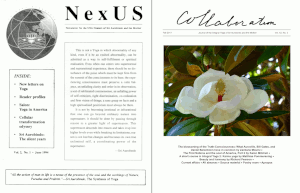
In 1995 NexUS merged with Collaboration and Gordon Korstange turned over editorship to Lynda Lester. With guest-editing assistance from David Hutchinson and Vishnu Eschner on a number of issues, Lynda served as managing editor until 2004–5. Larry Seidlitz began guest editing issues in 2002 and was managing editor from 2005–2019.
In 2020 SAA redesigned Collaboration’s layout to feature more white space and artistic elements. SAA began to assemble a new production team of editors, writers, artists, and collaborators to manage the journal in a spirit of collective yoga, deepen its contemporary relevance, and broaden its audience. SAA hopes to further expand the readership of Collaboration to include spiritually inclined people who may not be familiar with Integral Yoga but are fellow travelers in the yoga of the American soul.
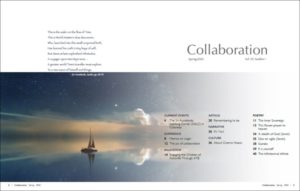
Going Online
Back in 1997, SAA had become involved with web publishing and established the website collaboration.org. In 1999, SAA took over hosting of Miraura (miraura.org), the first Integral Yoga website in the world. SAA also began offering free hosting for various Integral Yoga websites, including the Sri Aurobindo Ashram Delhi Branch, an Orissa Sri Aurobindo center, the Foundation for World Education, and Sri Aurobindo Sadhana Peetham (SASP). By 2010 all these groups were hosting their own websites, with the exception of SASP, which still is still hosted by SAA.
In 2000 SAA also developed and began hosting the aurobindo.org email lists, including Auroconf, Auroinfo, Psych, Savitri, Synthesis, Money-Power, Centers, Quotes, and Doucemere, as well as a number of work committees. These lists were popular for discussions and announcements; some remain active today
In 2014 SAA expanded the scope of collaboration.org to better showcase a range of community activities. These included a permanent web archive for the AUM conference, a directory of Collaboration back issues and indexes, a list of Integral Yoga groups and organizations, and a repository of media resources.
In 2018 SAA upgraded collaboration.org to WordPress and cross-platform compatibility. Also in 2017, the board returned the aurobindo.org domain name to the Sri Aurobindo Ashram in India and moved all the lists to the domain name collaboration.org.
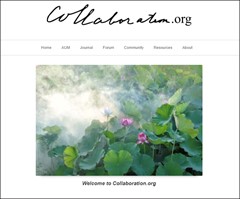
At the request of many users of SAA email list services, in 2018 SAA developed the Integral Yoga Forum, which provides a web format for sharing ideas and experiences of Integral Yoga. The forum offers social-network capabilities for threaded discussions, private messaging, and member profiles.
In 2020 SAA brought together a new working team to further expand the collaboration.org website and add new features and content to serve the community, including videoconference discussions and a YouTube channel. SAA also plans to modernize and update the Miraura website.
Integral Yoga Conferences
The All USA Meeting (AUM) is an annual conference for people interested in Sri Aurobindo and the Mother, Integral Yoga, Auroville, consciousness, evolution, and the future of humanity. In 1985 and 1986 the first two AUMs were organized by a working group in the eastern U.S., members of whom would also help to form SAA (see the “SAA team members through the years” section, below.
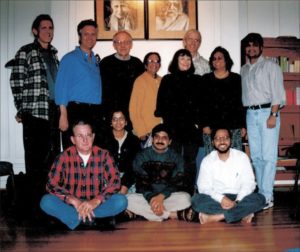
Since then SAA has organized or co-sponsored a number of AUMs and offered loans and grants to the yearly meeting. Board members have also served in an individual capacity on local AUM teams. SAA began posting AUM web pages in 1997 and now hosts the main AUM site and archive.
To promote the continuity and efficiency of AUM planning, SAA supported the creation of the AUM Continuity Team in 2003. SAA has managed the team’s bank account since 2007.
SAA also organized the Cellular Evolution Conference in San Francisco in 1995 and sponsored a three-day council in San Francisco in 2000 of Integral Yoga organizations from around the U.S.
Collective Yoga
In addition to its external activities, SAA has aspired from the beginning to do yoga as an organization and create a psychic collectivity offered to the work of Sri Aurobindo and the Mother in the U.S. In 1991, finding it difficult to conduct all activities via long-distance phone calls, SAA began a concerted effort to meet face to face twice a year. From 1997 to 2004, SAA held a number of “intensives” for board members focused on sadhana. Since 2009, SAA has held one- or two-day meetings several times a year for spiritual team building and to develop processes for group communication and dynamic karma yoga.
In the late 1990s, but increasingly after 2011, SAA began welcoming additional volunteers to participate in SAA projects. These “collaborators” help with finances, administration, Collaboration journal, web engineering, information technology, and envisioning new possibilities for knowledge, practice, and community in Integral Yoga.
SAA Team Members through the Years
Many individuals have participated in the progressive evolution of SAA:
- Initiators: East Coast volunteers involved in discussions that eventually resulted in the formation and consolidation of SAA include Eric Hughes, Sam Spanier, Julian Lines, Jan Maslow, David Wickenden, Gordon Korstange, Jean Korstange, Margo Macleod, Miriam Belov, Connie Buckley, Anie Nunnally, Rudy Phillips, Vern Henshell, Navaja Llope, David Mitchell, Roger Toll, George Hunziker, and Sudha Hunziker.
- Board members: SAA board members have included (in approximate chronological order): Gordon Korstange, Jean Korstange, Tom O’Brien, David Mitchell, Jan Maslow, Miriam Belov, Advait Dwivedi, Eric Hughes, George Hunziker, Jayant Patel, Sudha Hunziker, George Hunziker, Julian Lines, David Wickenden, Wayne Bloomquist, Will Moss (Karun Das), Martha Orton, Ariel Brown, Surama Bloomquist, Vishnu Eschner, David Hutchinson, Lynda Lester, Chandresh Patel, Kalpana Patel, Bhuvana Nandakumar, Theresa Boschert, John Robert Cornell, Margaret Phanes, Angelo Salerno, Ananda (Terry Billington), Mateo Needham, Mira Patel, Gloria Sayavedra, Jonathan Kay, and Susan Curtiss.
- Collaborators: SAA collaborators have included (in approximate chronological order): Marta Belén, Larry Seidlitz, Lucie Seidlitz, Ananda (Terry Billington), Govinda (Nick Rytlewski), David Hutchinson, Constance Walker, Miguel Alvarez, Kant Patel, Karen Cornell, Mira Patel, Margaret Greer, Kinjal Shah, Kalpen Shah, Alicia Gonzales, Bahman Shirazi, Karun Das, Martha Orton, Robert Orton, Marco Morelli, Marco Masi, Elizabeth Teklinski, Karen Mitchell, Patrick Beldio, Karun Das, Andrea Van de Loo, Shayna Kay, Prateek Mehra, Vishnu Eschner.
A walk down memory lane: Some past board members of the Sri Aurobindo Association
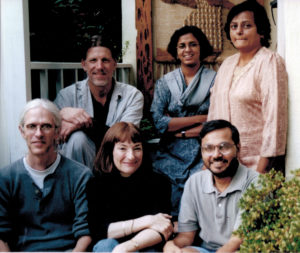
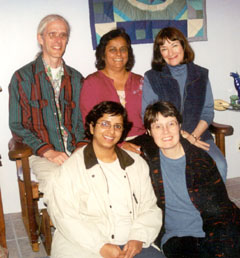
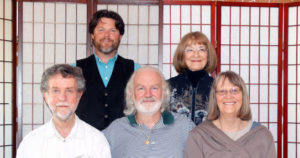
Infrastructures for consciousness
Through all its endeavors, the Sri Aurobindo Association aspires to build new infrastructures for consciousness and instrumental channels through which Mother’s force may flow, bringing us ever nearer to the life divine.
Updated: January 2021

